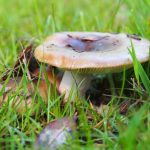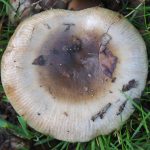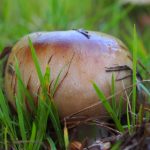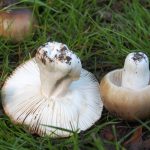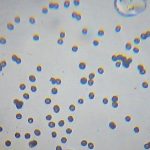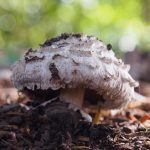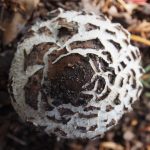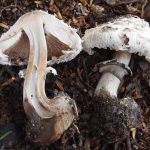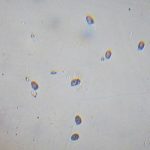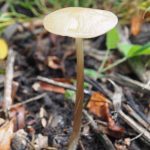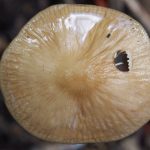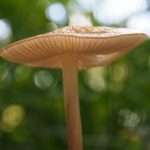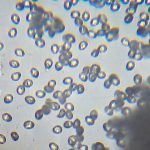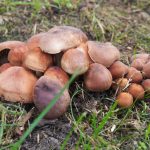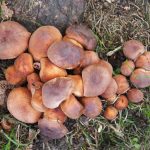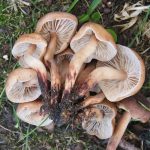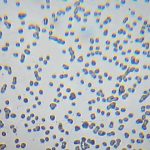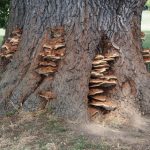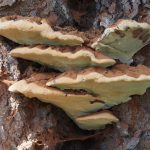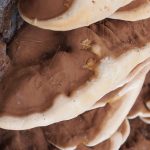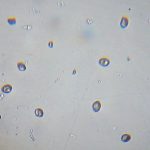1.
Spectacular Rustgill (
Gymnopilus junonius).
-
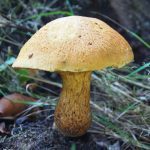
- 1. Spectacular Rustgill
-
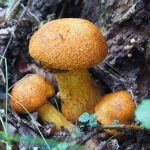
- 1. Spectacular Rustgill
-
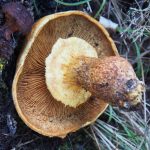
- 1. Spectacular Rustgill
-
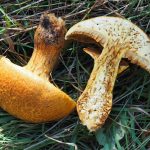
- 1. Spectacular Rustgill
-
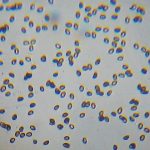
- 1. Spectacular Rustgill
Growing from buried parts of rotting stump. Several clusters and individuals. Cap 2-8cm. Slight mushroomy smell. ID is almost sure. Sporeprint Reddish brown. Spores 5.5-7.5µ x 4-5µ.
2.
Pluteus ephebeus.
-
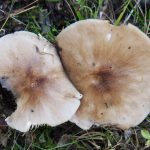
- 2. Pluteus ephebeus
-
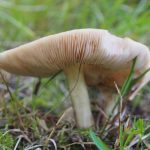
- 2. Pluteus ephebeus
-
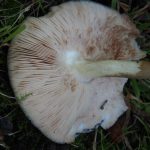
- 2. Pluteus ephebeus
-
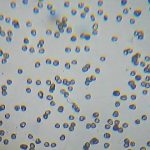
- 2. Pluteus ephebeus
Growing on damp earth in wood clearing. Two. Cap 5.5-7cm. Slight smell, perhaps radishy. Very hard to identify this mushroom. Could be a type of Entoloma (Pink Gill), but these spores are too small. Could be another type of Pluteus but this one is my best guess. Also, Pluteus ephebeus is very variable. ID is possible. Sporeprint Brownish pink. Spores 5.5-7.5µ x 5-6.5µ.
3.
Jelly Rot (
Phlebia tremellosa).
-
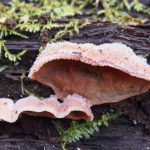
- 3. Jelly Rot
-
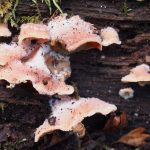
- 3. Jelly Rot
-
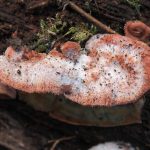
- 3. Jelly Rot
-
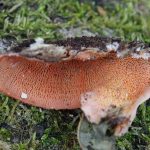
- 3. Jelly Rot
-
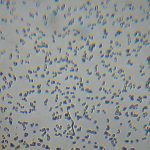
- 3. Jelly Rot
Growing on rotting log in tiers. Several tiers. Lobes up to 10cm long, 2cm outwards. Pleasant mushroomy smell. Flesh soft and thin. Spores 4.5-5.5µ x 2.5-3µ.
4.
Tawny Grisette (
Amanita fulva).
-
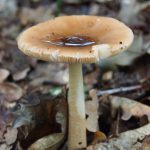
- 4. Tawny Grisette
-
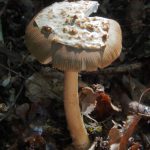
- 4. Tawny Grisette
-
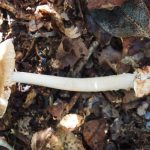
- 4. Tawny Grisette
-
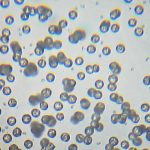
- 4. Tawny Grisette
-

- 4. Tawny Grisette
Growing through leaf litter in mixed woods. Many scattered singly throughout the wood. Cap 7cm, Stem 9cm. No smell. One of these had the veil remnants left prominently on its cap. Sporeprint White. Spores 9-11.5µ x 8-11µ.
5.
Blackening Brittlegill (
Russula nigricans).
-
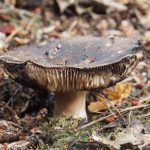
- 5. Blackening Brittlegill
-
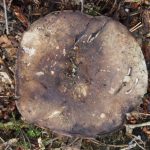
- 5. Blackening Brittlegill
-
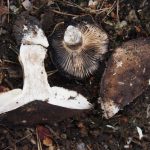
- 5. Blackening Brittlegill
-
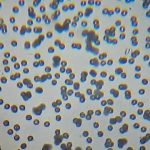
- 5. Blackening Brittlegill
Growing in mixed woods. Two. Cap 5-9cm. Stem up to 5cm. Slight indistinct smell. Mild. Stem quite tough, gills very brittle. Sporeprint White. Spores 6.5-7.5µ x 5.5-7µ.
6.
Suede Bolete (
Boletus subtomentosus).
-
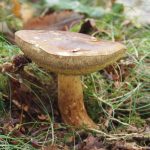
- 6. Suede Bolete
-
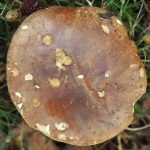
- 6. Suede Bolete
-
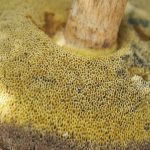
- 6. Suede Bolete
-
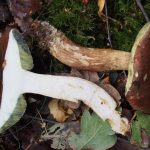
- 6. Suede Bolete
-
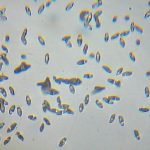
- 6. Suede Bolete
Growing in earth near rowan and birch. One. Cap 7cm, stem 7cm. Slight pleasant mushroomy smell. Could be Bay Bolete or something else, but spore size points towards Suede Bolete. ID is fairly likely. Sporeprint Mid-brown. Spores 8.5-13µ x 4-5.5µ.
7.
Boletus luridiformis.
-
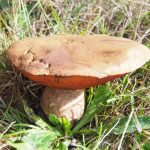
- 7. Boletus luridiformis
-
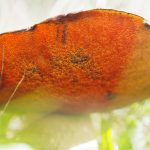
- 7. Boletus luridiformis
-
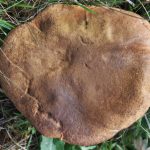
- 7. Boletus luridiformis
-
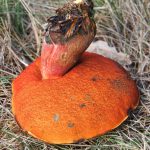
- 7. Boletus luridiformis
-
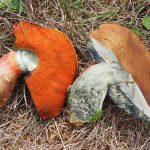
- 7. Boletus luridiformis
-
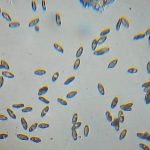
- 7. Boletus luridiformis
Growing in grass a little way from oak trees. One. Cap 10cm, stem 5cm long. Slight indistinct smell. Wonderful orange pores and pink stem. ID is very likely. Sporeprint Mid-brown. Spores 11.5-14.5µ x 5-6.5µ.
8.
Spotted Toughshank (
Collybia maculata).
-
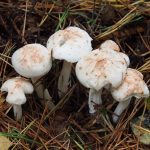
- 8. Spotted Toughshank
-
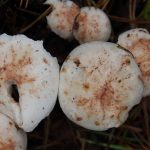
- 8. Spotted Toughshank
-
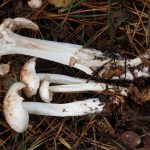
- 8. Spotted Toughshank
-
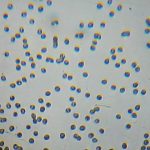
- 8. Spotted Toughshank
Growing though needles under pine trees. One big cluster and several scattered around. Cap up to 6cm, stem up to 12cm. Slight indistinct smell. Sporeprint Whitish. Spores 5-7µ x 4.5-6µ.
9.
The Prince (
Agaricus augustus).
-
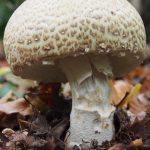
- 9. The Prince
-
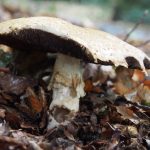
- 9. The Prince
-
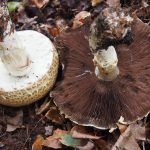
- 9. The Prince
-
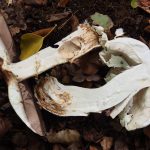
- 9. The Prince
-
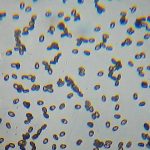
- 9. The Prince
Growing in soil in mixed woods beside road. Group of three or four. Cap 15cm, stem 10cm. Immature one smelling strongly of almonds, older one of aniseed and a bit unpleasant. ID is almost sure. Sporeprint Dark brown. Spores 7-8µ x 4.5-5.5µ.












































